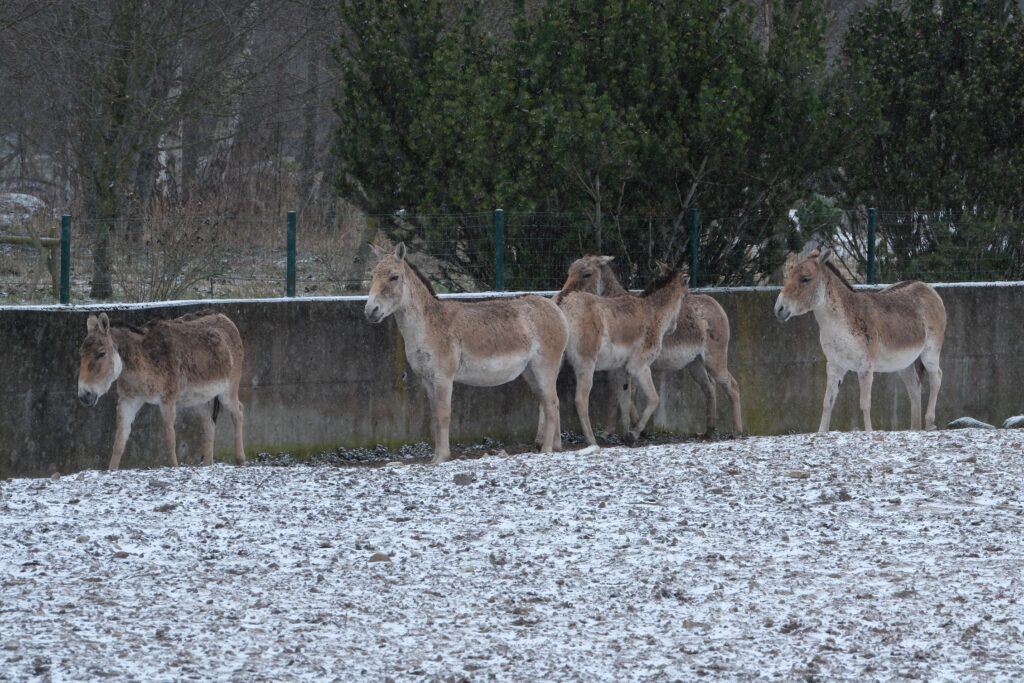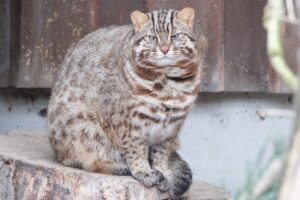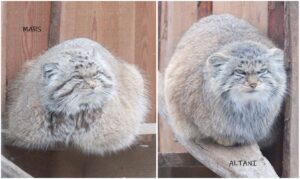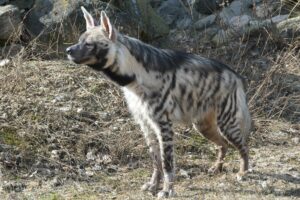1 April, the day of pranks and fun at the beginning of the week, teased people with the warmth of summer, followed on Tuesday by heavy rainfall, on Wednesday by snowflakes swirling in the wind and the ground being covered with a thin layer of snow, while Thursday brought crispness and sunshine.
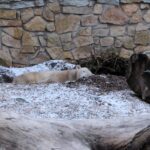
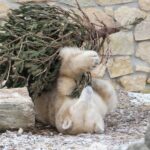 Polar bears are especially fond of thin layers of snow and freezing temperatures. Friida fumbles with the top of a thick spruce or snuggles in the snowy hollow of tree, her favourite toys within reach of her paws.
Polar bears are especially fond of thin layers of snow and freezing temperatures. Friida fumbles with the top of a thick spruce or snuggles in the snowy hollow of tree, her favourite toys within reach of her paws.
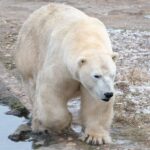 Rasp, too, likes to tug at the spruce, but right now he’s wandering along the enclosure in a huff. He is not pleased: Friida is close, but they won’t be getting together this year. Hopefully, the species coordinator will be able to find Rasp a young mate with worthy genes.
Rasp, too, likes to tug at the spruce, but right now he’s wandering along the enclosure in a huff. He is not pleased: Friida is close, but they won’t be getting together this year. Hopefully, the species coordinator will be able to find Rasp a young mate with worthy genes.
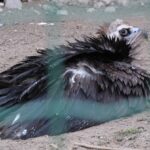
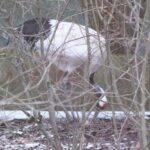 Despite the inclement weather, the happy couple is incubating an egg laid on 3 March in the nest in their enclosure. On Kullimäe, the male vulture went to a great deal of trouble and built a grand nest on a shelf. Despite his efforts, the female laid her eggs on the sand of the enclosure and began to incubate them there. Our only 19-year-old Bald eagle also laid its first egg.
Despite the inclement weather, the happy couple is incubating an egg laid on 3 March in the nest in their enclosure. On Kullimäe, the male vulture went to a great deal of trouble and built a grand nest on a shelf. Despite his efforts, the female laid her eggs on the sand of the enclosure and began to incubate them there. Our only 19-year-old Bald eagle also laid its first egg.
A crisp Thursday saw an Amur cat sitting on a stump. However, the manuls, who had overcome their hectic mating period, huddled like round balls of fur in different corners of their enclosure. In the hyena complex, young striped hyenas can now be seen sniffing the spring.
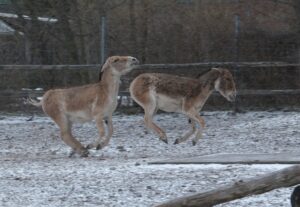 In the hyena complex, young striped hyenas can now be seen sniffing the spring. Some of the mares were big-bellied in appearance – let’s hope that their meeting last spring with the stallion did not go to waste.
In the hyena complex, young striped hyenas can now be seen sniffing the spring. Some of the mares were big-bellied in appearance – let’s hope that their meeting last spring with the stallion did not go to waste.
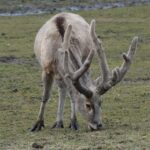 Milu bulls, with their mighty hairy horns, ate sprouting blades of grass on the day the herd was let out to pasture. The European robin is singing, even the Eurasian chaffinch, which returned from its migration some time ago, has opened its beak to join in. Low-flying flocks of brent geese and grey geese take feeding breaks in the zoo’s meadows, offering the pleasure of discovery.
Milu bulls, with their mighty hairy horns, ate sprouting blades of grass on the day the herd was let out to pasture. The European robin is singing, even the Eurasian chaffinch, which returned from its migration some time ago, has opened its beak to join in. Low-flying flocks of brent geese and grey geese take feeding breaks in the zoo’s meadows, offering the pleasure of discovery.
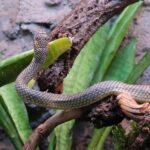 In the Pachyderm House, the Caspian whipsnake moved into a new terrarium. In the Tropical Houses, tiny shimmering green kubotai rasbora (Microrasbora kubotai) were released into the freshwater biota aquarium.
In the Pachyderm House, the Caspian whipsnake moved into a new terrarium. In the Tropical Houses, tiny shimmering green kubotai rasbora (Microrasbora kubotai) were released into the freshwater biota aquarium.
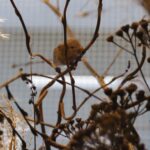 On Easter Sunday, two pups from the second harvest mouse litter emerged from a woven bird-like straw nest in a wildlife class terrarium at the nature school. Since the transition to daylight saving time, the children’s zoo is open one hour longer.
On Easter Sunday, two pups from the second harvest mouse litter emerged from a woven bird-like straw nest in a wildlife class terrarium at the nature school. Since the transition to daylight saving time, the children’s zoo is open one hour longer.
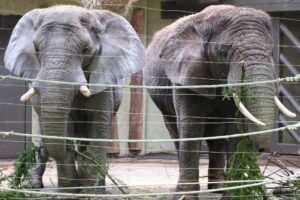 A row of spruce trees that had been damaged by bark beetles was removed from in front of the old bear house. Vitamin-rich spruce needles are a favourite of the elephants and other shoot-eaters, while coarse trunks can be used to erect scratching posts and other elements to enrich the living environment in enclosures.
A row of spruce trees that had been damaged by bark beetles was removed from in front of the old bear house. Vitamin-rich spruce needles are a favourite of the elephants and other shoot-eaters, while coarse trunks can be used to erect scratching posts and other elements to enrich the living environment in enclosures.
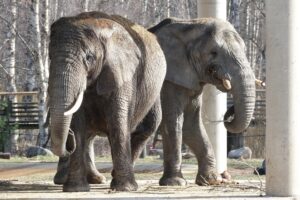 Zoo workmen used old tires to craft fun tire snakes for our elephants. They will be given to the elephant mothers on an afternoon outdoor walk at around 15.30 on Sunday, 7 April. The weather forecast promises that the weather will warm up, and the elephants will then be able to spend more time outdoors. Since the observation tower is still closed at the moment, their activities can be observed from the elephant mothers’ bridge on the opposite side of the enclosure.
Zoo workmen used old tires to craft fun tire snakes for our elephants. They will be given to the elephant mothers on an afternoon outdoor walk at around 15.30 on Sunday, 7 April. The weather forecast promises that the weather will warm up, and the elephants will then be able to spend more time outdoors. Since the observation tower is still closed at the moment, their activities can be observed from the elephant mothers’ bridge on the opposite side of the enclosure.


